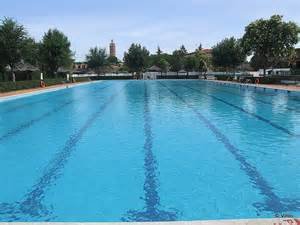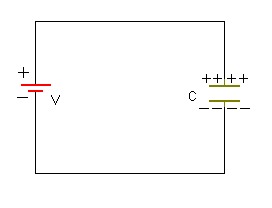MiniE 2.2 Passive elements: Capacitors // Let’s learn: Basic Electronics
 GG electronics: Let's Learn // MiniE 2.2
GG electronics: Let's Learn // MiniE 2.2
 GG electronics: Let's Learn // MiniE 2.2
GG electronics: Let's Learn // MiniE 2.2 Recap of the previous Minie
Greetings, in the previous minie: We talk about "electrical resistance" and that the EIA standardized encapsulated with specific "electrical resistance" values, as well as encoding them.
If you haven't read it, I invite you to read it, I assure you that you will find it very useful:
Capacitor
Before defining the capacitor, I think we need to ask the following question:
It's time for my eloquent analogies. Imagine:

In a pool are a lot of couples, boys and girls, and the lifeguard gives the order that all leave the poll, but separating the boys from the girls. The boys leave slowly and remain at one end of the pool, while the girls perform the same action but remain at the other end. After a certain time, when the order was given, the pool is totally alone, the boys at one end and the girls at the other. In this case:
- The lifeguard order is, the application of a voltage on the capacitor terminals.
- Boys represent the positive charge (blue) and girls the negative charge (red), not because girls are always negative ... of course not ...
- The pool, is a container with water, which represents the dielectric that is between the ends. However water is not a dielectric.
- The ends of the pool represent the places where the electrical charge is stored or remains.
Then we can define that: The capacitor, in general, is a passive electronic component that has the capacity to store electric charge. This is composed of two parallel plates and in the middle of these two, there is a dielectric.
By applying a constant voltage to the capacitor terminals, it will store the energy, separating the positive and negative charges (protons and electrons) in the plates. If this voltage is applied directly, the load is instantaneous, but if applied in an "RC" circuit the load will take a certain time.

Below I explain, in a simple way, what is an "RC" circuit.
Now, what happens to that stored energy?
It depends:
- If after you charge the capacitor, you turn off the source and leave it where it is, it will auto discharge. After a considerable time, 1 hour for example, will be discharged.
- If after charging, disconnecting the source and connecting a "load" (that is to say, something that consumes energy), an "RC" discharge circuit will occur. Which, just as occurs in the load, the discharge will be made in a certain time.
- If we make a short circuit between the two terminals of the capacitor, a spark will be created (be careful with capacitors with great capacity), and instantly after the spark will be discharged.
You could explain at once what an "RC" circuit is?... !!!
Well, well, I do not want to confuse you. An "RC" circuit is a circuit that has a Resistance and a Capacitor ... Obvious right?
Then with an "RC" circuit you can charge and discharge the energy stored in a capacitor in a certain time, this can be used for simple timer applications (very simple and few precise), among others.
How is a capacitor?
The capacitors as well as the resistors, as explained in the MiniE 2.1, are standardized by the EIA. These have different types and can vary in sizes, dielectric used, colors, shapes, etc.
The most common are ceramic (NP) and electrolytic (P), are also polyester, variable, among others.

Capacitors can be polarized or non-polarized, and their typical values range from picofarads to microfarads. There are other commercial values of domestic use, in MDF (microfarads) as is the starting capacitor of the compressor of an air conditioner or a refrigerator.
Polarized (P) = have a "+" end and a "-" end, already defined. If you reverse it, wait for the explosion.
Non-polarized (NP) = Like a resistor, it does not matter which way it connects.
I suppose that is enough for today, in the next publication comes the first example, enough theory and attack a little with practice.
I hope you have been interesting the subject, do not forget to check the previous MiniE. I apologize for taking so long to publish this MiniE, I was sick and other problems were presented to me.
Congratulations @gg-electronics! You have received a personal award!
Click on the badge to view your Board of Honor.
Do not miss the last post from @steemitboard:
Congratulations @gg-electronics! You received a personal award!
You can view your badges on your Steem Board and compare to others on the Steem Ranking